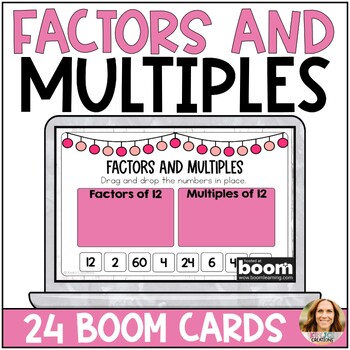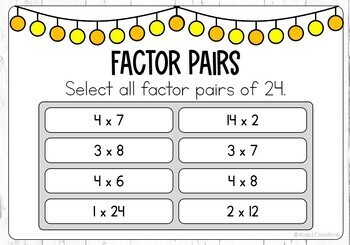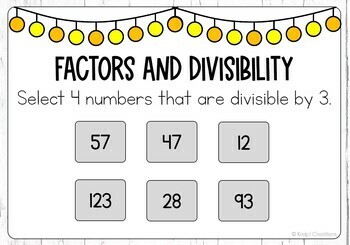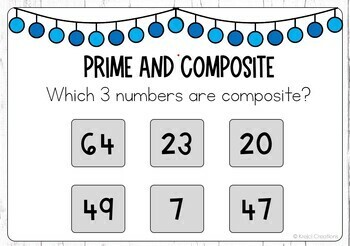Factors and Multiples, Prime and Composite Number Boom Cards - 4th Grade Review
- PDF
- Internet Activities
What educators are saying
Also included in
- Review all 4th grade math skills with these NO PREP digital task cards perfect for math centers and test prep! They have been the most valuable tool in preparing my students for regular chapter tests and end of the year state testing. Students receive immediate feedback after each question, making tPrice $22.96Original Price $32.80Save $9.84
Description
These Boom Cards will help your students review factors, multiples, prime and composite numbers, and patterns in a fun and interactive way. Boom Cards have been the most valuable tool in preparing my students for regular chapter tests and end-of-the-year state testing! Students love them too. They never complain about having to do Boom Cards! Try a small sample❤️HERE❤️and see why everyone LOVES Boom Cards!
Topics include:
✅ Factors and Factor Pairs
✅ Divisibility Rules
✅ Common Factors
✅ Multiples
✅ Prime and Composite Numbers
✅ Number Patterns
Boom Cards are self-checking, meaning students receive immediate feedback after each question. That is their WOW factor! If students need extra practice before a test, send them a Boom Card deck. I've had parents thank me for the extra help and tell me how helpful Boom Cards were for them too!
They are also a NO PREP resource. Copy and paste a link to Google Classroom, Schoology, Boom Learning, or whatever online platform you use. That is about as low prep as it gets!
PLEASE NOTE: Boom Cards can be used through a FREE or paid account, depending on what features you would like access to.
Click ⭐HERE⭐ to watch a video tutorial showing how to access your purchased deck and assign it to your students. This deck aligns with Chapter 5 in the 4th grade Go Math curriculum but can be used with any unit on factors and multiples.
Ideas for use:
- Math review center
- Pretest
- Homework assignment
- Whole class review game
- Daily review for test prep
Other Test Prep Boom Cards
✎ Place Value, Addition, and Subtraction Boom Cards
✎Multiply by 1-Digit Numbers Boom
✎ Multiply by 2-Digit Numbers Boom Cards
✎ Divide by 1-Digit Numbers Boom Cards
✎ Comparing Fractions Boom Cards
✎ Add and Subtract Fractions Boom Cards
✎ Multiply Fractions by Whole Numbers Boom Cards
✎ Fractions and Decimals in Tenths and Hundredths Boom Cards
✎ Two-Dimensional Figures Boom Cards
✎ Customary and Metric Measurement Boom Cards
✎ Area and Perimeter Boom Cards
Let's Connect!
✨Blog
Copyright © Krejci Creations
This purchase is for single-classroom use only.
Please purchase additional licenses if you intend to share this product.
Be sure to leave feedback to earn points toward future purchases!






